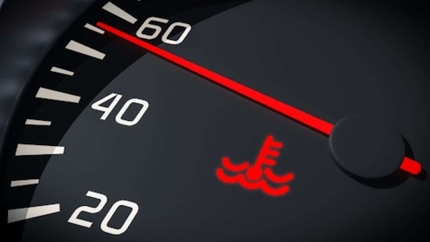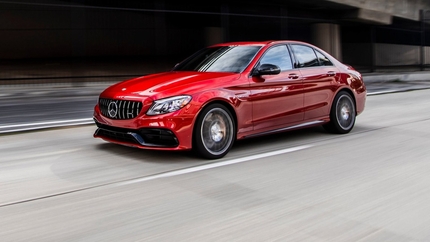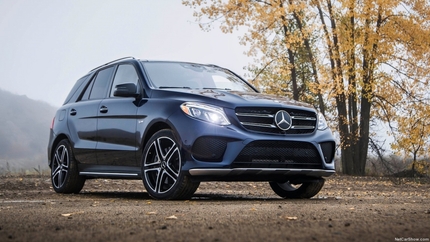- 12/21/2023
- 3 Min Read
- By: Christian Schaefer
Choosing The Proper Engine Coolant For Your Mercedes
Choosing the correct fluids for your car is one of the most daunting tasks for a new DIYer. The local auto parts store will have walls lined with oils, solvents, and fluids as far as the eye can see without the definitive information you need. Choosing the right engine coolant is no different. Is it the green kind or the pink kind? Maybe the blue one? In Mercedes’ case, it could be any of the three depending on which engine you have. Coolant composition has changed over the years as engine system materials have evolved for better efficiency, so you’ll need to know which one is for your Mercedes before topping up your cooling system.
What Are Antifreeze & Coolant?
Every diesel and gasoline-powered engine contains a constant series of small explosions while running. The fuel igniting in the cylinders creates the power that drives the car and sends us on our way, but as you might imagine, those explosions make things hot. Those explosions can weaken and warp the metal around it if left long enough, effectively destroying the engine components. Coolant and cooling systems prevent that, so your engine can last as long as it’s taken care of.
Circulating through the radiator of your Mercedes-Benz or Mercedes-AMG is a mixture of distilled water and antifreeze. The terms coolant and antifreeze aren’t as interchangeable as some believe, but their use in a given situation will usually get the point across. In official Mercedes terms, coolant is the blend of antifreeze and water needed to keep engines at their optimal operating temperature in all weather conditions. Antifreeze is a unique blend of concentrated chemicals that lowers the freezing point and raises the boiling point of water. It also has a few chemicals that prevent corrosion which is especially important when mixed with non-distilled water. There is much more to coolant than those basics, but just know that you’ll likely be fine as long as there’s enough coolant in your system and it’s not leaking out.

Low engine coolant or a leaky system can be detrimental to your engine’s health, especially turbocharged engines. Turbochargers and other forms of forced induction create far more heat than a normally aspirated one, making a case for a properly functioning cooling system that is much more important. A cooling line or pipe crack can introduce air into the system and let coolant leak out. The system’s newly introduced air will likely get trapped, causing a part of the engine to experience significantly more heat than the rest.
A low coolant level is a much easier fix than a cracked pipe, but it still requires knowing which coolant you need and how you’ll have to prepare it.
Which Coolant Does My Mercedes Take?
Just about every Mercedes engine in the last 25 years will take one of two possible coolant specifications, according to Mercedes. The difference between them resides in a couple of chemicals that have been removed from the newer coolant specification: Borate and 2- 2- ethyl hexanoic acid, to be specific. The new coolant is compatible with older engines, but the old formulation shouldn’t be used in a newer application.
Mercedes also has a funky way of labeling their coolants. The most important identifying number is the one after the decimal. The earlier ones, 325 and 326, signify whether you’re buying a jug of concentrated antifreeze or pre-mixed coolant, respectively. Concentrated antifreeze must be diluted 50/50 with water before finding its way into a cooling system. Running pure antifreeze is not recommended as it can cause engine damage, so read carefully before purchase.
Mercedes Specification 325.0/326.0
The Mercedes 325.0 specification coolant was the standard formula during the early ’00s. It was a Hybrid Organic Acid Technology (HOAT) formula that Mercedes used right up until the 2014 model year. Any engine built after that will use the coolant listed in the next section. You can convert the pre-2015 engines to the newer coolant style; however, that takes an entire system flush and refill, which can be expensive and time-consuming.
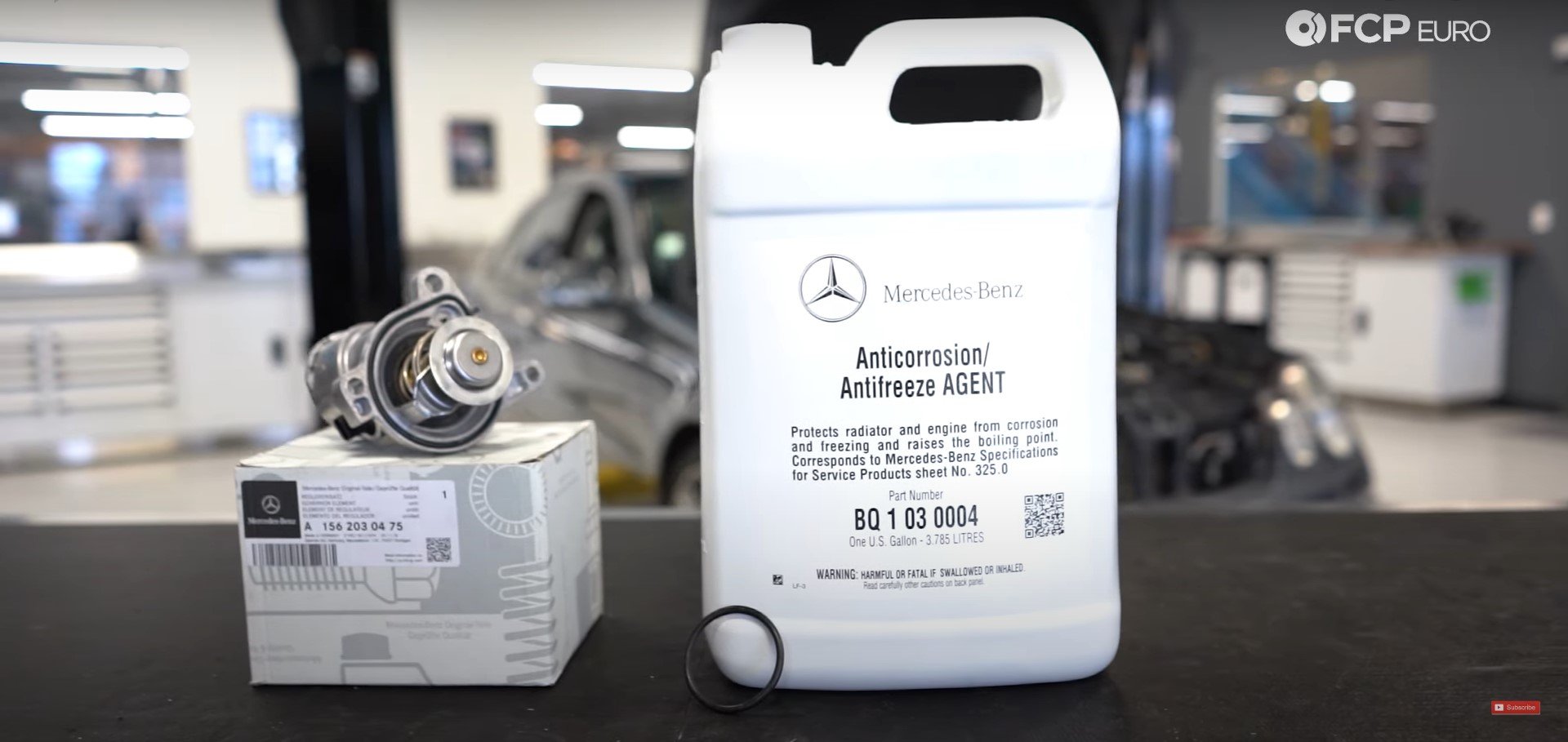
The original formula from Mercedes, a yellow color, carried the Q1030002 part number and was interchangeable with a G05-type coolant. Mercedes has since introduced a new, blue-colored antifreeze as a replacement that carries the Q1030004 part number and is interchangeable with a G48-spec antifreeze. You can mix the two in a pinch, but the yellow stuff hasn’t been sold for the last decade. Seriously consider draining and refilling your cooling system if your coolant is that old; its cooling and anticorrosion properties have deteriorated.
325.0/326.0-Compatible Engines (Pre-2014):
- M111/112/113
- M266
- M27X
- OM607/608
- OM611/612/613
- OM622.9
- OM628/629
- OM639
- OM640
- OM642
- OM653
Mercedes Specification 325.6/326.6
Following an emission update banning particular chemicals from automotive use, Mercedes revised their engine coolant formula in line with the new regulations. The new formula uses a Si-OAT (Silicate Organic Additive Technology) compound free of the borates in the .0-spec antifreeze. This pink-colored coolant originally carried the 325.5 and 326.5 designations before being superseded with the .6 formula and remains the current standard in the Mercedes-Benz and Mercedes-AMG engines. If you can’t get your hands on the official Mercedes stuff, any G40-spec coolant should do the trick.
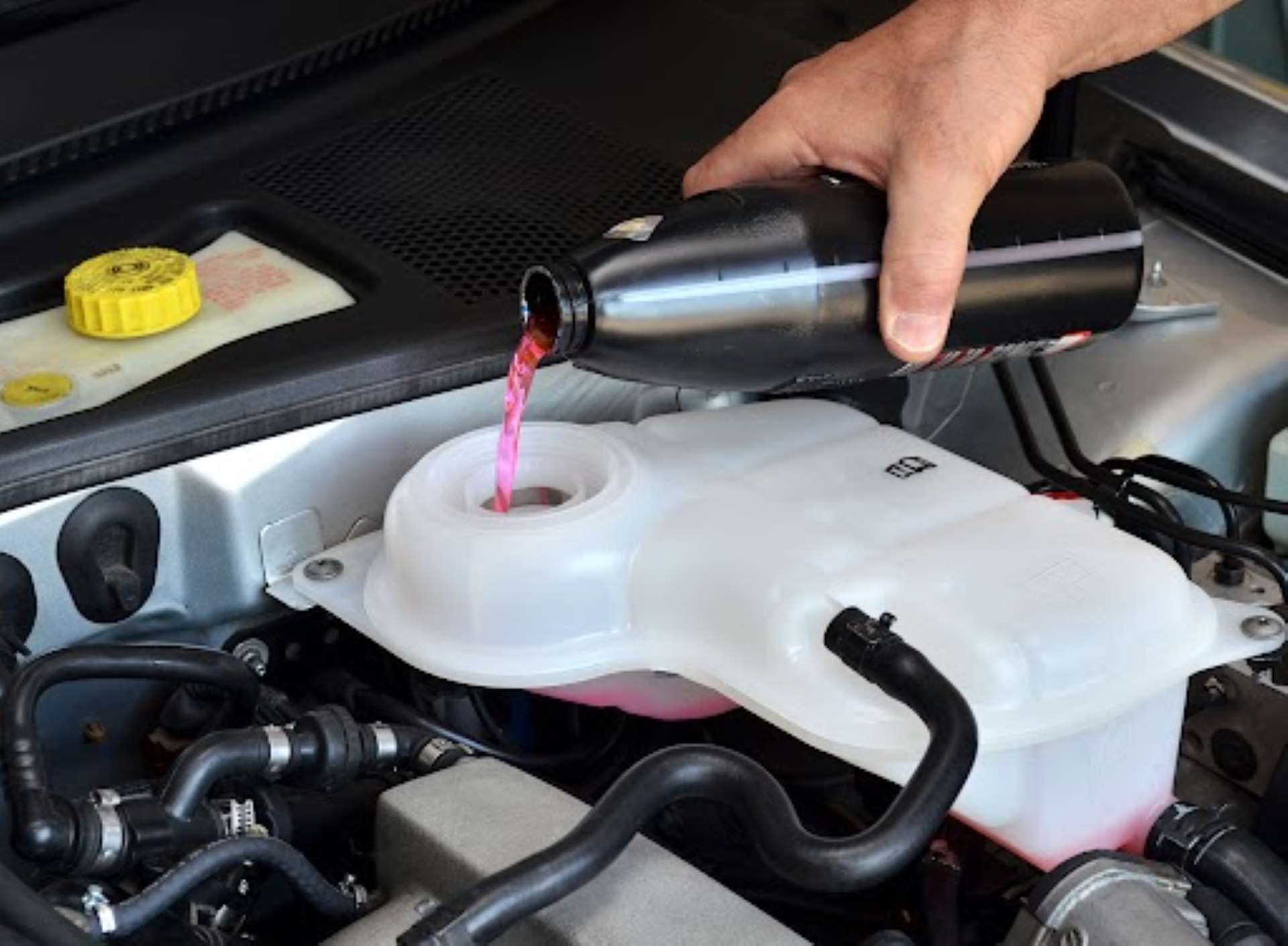
The older Q1030004, G48-spec stuff can be used in a newer engine like these, but only if the cooling system is completely drained and refilled. We strongly advise against mixing the two, which can lead to damaged cooling system components.
325.6/326.6-Compatible Engines (2014-Present):
- M111/112/113
- M133
- M137
- M139
- M15X
- M176
- M177
- M178 (AMG GT Black Series Excluded)
- M254
- M256
- M260
- M264
- M266
- M27X
- M282
- OM607/608
- OM611/612/613
- OM622.8
- OM622.9
- OM626
- OM628/629
- OM639
- OM640
- OM642
- OM653
- OM654
- OM656
What Kind Of Coolant Should I Use?
As we know, not all engine coolants are identical. Different cars require different formulas with different colors to meet the manufacturer’s specifications. However, once you determine which formula you need, you can choose whichever brand you’d like. Genuine Mercedes coolant is one of the best ways to go, as it is the exact stuff dealerships and the factory uses in brand-new examples. We offer the latest specification stuff in its concentrated form in a gallon jug. Rowe provides a concentrated gallon of the older 325.0-spec coolant for use in the older engines if you’re looking for a non-Mercedes brand. Otherwise, you can use the official stuff found here.
We also offer coolant as part of a few different FCP Euro Service Kits. Replacing your thermostat, water pump, radiator, and old cooler are all going to involve dropping coolant from your Mercedes’ cooling system. You can find a bunch of those kits right here or by entering your car’s information into the “My Garage” tool on our homepage and following the drop-down menu. The kits contain everything you’ll need to perform a specific job, so you’ll never have to worry about missing an all-important o-ring once everything is apart. Plus, all of those parts and the included coolant are part of our Lifetime Replacement Guarantee.
When Should I Replace My Coolant?
Mercedes recommends a coolant flush and refill every 30,000 miles or every two years, whichever happens first. Truthfully, you'll be fine to run the same coolant for a bit longer than that, but the antifreeze's cooling and protective properties won't be as strong as they were. That is especially the case with the older 325.0-spec Q1030002 and Q1030004 bottles of antifreeze. The newest 325.6 formula, part number Q1030005, has improved durability, so it should retain its properties for longer.
Also, be sure to properly flush all of the old coolant out if you're updating an older engine with the HOAT chemical formula to the newest Si-OAT chemical formula. Mixing the 325.5-spec with the 325.0-spec will cause accelerated wear of cooling system components.
What Else Can I Do For My Cooling System?
Along with keeping track of the coolant level and health, you'll want to keep an eye on the cooling system components. Older Mercedes that are now commonplace on the second-hand market will likely have upwards of 60,000 miles. Cooling system components will regularly last well beyond that range, but examining hoses and connections is a great way to be safe. Plus, performing a coolant flush or replacement pairs won't be too much extra work if you find an issue, considering you'll already have most of the coolant out of the cooling system.
Please leave any questions you have regarding your Mercedes cooling system below so we can put you on the right path. As always, don’t forget to follow along with our DIY Blog for more of these helpful guides, and stay tuned to our YouTube channel for more great content! Happy wrenching!


